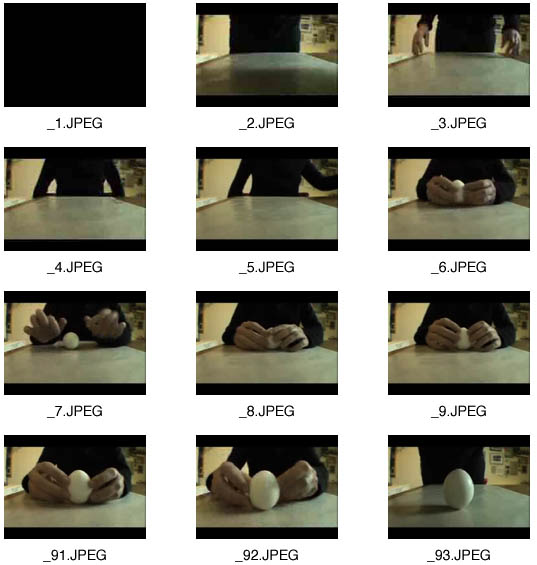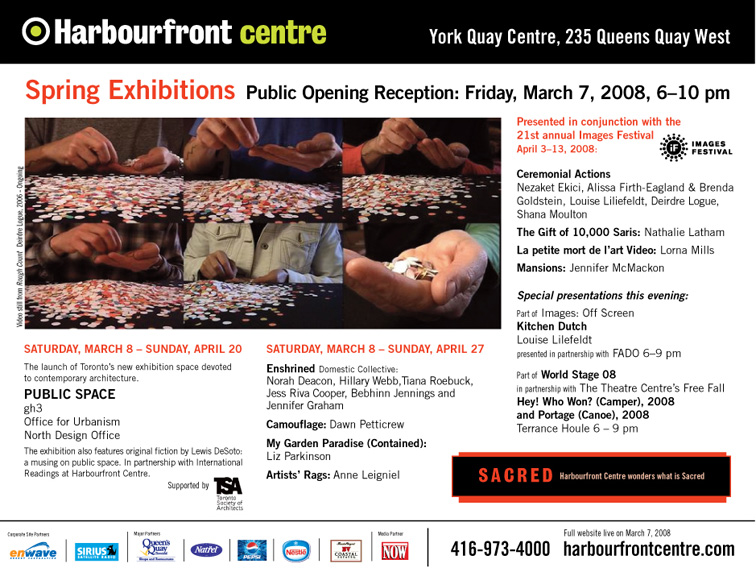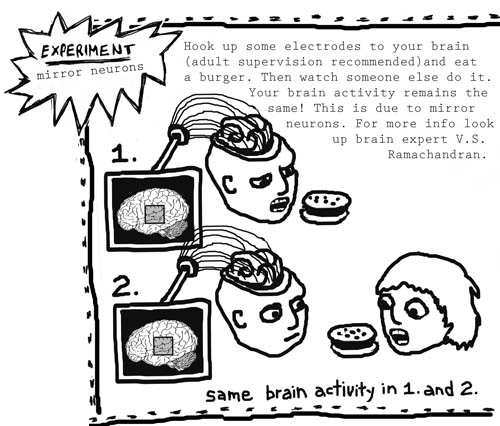
|
Lorna Mills and Sally McKay
Digital Media Tree this blog's archive OVVLvverk Lorna Mills: Artworks / Persona Volare / contact Sally McKay: GIFS / cv and contact |
View current page
...more recent posts
Some kids get to go to cyber camp. Next week I am going to SciBar Camp (and taking my mimesis/mirror neuron mish-mash with me). I'm looking forward to it, but I must admit to a certain amount of skepticism about the current rampant enthusiasm for art-science collaborations. There are a few barriers. For one thing, contemporary art is just about as inpenetrable for the novice as science, but most scientists are not self-educating on the leading edges of art theory (and why would they?). There are also distracting superficial reasons for getting together. Scientists are often attracted to the idea that artists might beautify and disseminate their science (do outreach) for new audiences. For artists, science provides status and legitimacy (and bigger grants).
In contemporary art discourse, it is (rightly) very difficult to make claims to universal meaning. By attaching ourselves to science, artists get to piggy-back our work to content that seems on the surface like empirical truth. Of course, anyone who has done any half-way serious research knows that the knowledge produced by science is also negotiated, historical and subject to cultural influence and ideology. But it is very tempting for artists to sweep this understanding under the rug in order to get the sexy "hit" of external meaning. I know because I've done it myself. It's fun and liberating to take a break from the contexts and conventions of your own field, kind of like going on a vacation to another country (which is why I've adopted the role of "tourist" for my forays into physics). But I think it's probably a good idea to try and stay critical, even when you're on a holiday.
These pitfalls also present opportunities and open up new paths of inquiry. I dunno how much of this discussion belongs at SciBar Camp. I don't really want to participate in cranky old-lady mode, since I am completely inspired right now by my own cross-disciplinary research. I guess I'll just show up and see what happens next.
I have been looking for this image for a long time, it was scrubbed off the Canadian Government's on-line image archives, but magically reappeared on an Alberta separatist's web site.
(Anthony Easton, why do they want to separate? Should they stay or should they go?)

Next on the agenda are the imaginative and rythmically edifying jottings from an eminent lady of letters, Hannah Evans:
In Cuba a man named Fidel
Told America 'You go to hell'
His health is now ailing
His government failing
But his hat and cigar still look swell.

I might add that this gentle-lady with a pen is mighty pissed off that the political email list she subscribes to has a 'no limericks' rule. And so we stand in solidarity with her as I was pissed off by that very same list's 'no long emails about the dream I had last night' rule.
(they also make fun of Sally whenever she brings up the subject of mimesis. That's just so wrong of them.)
SACRED curated by Patrick Macaulay, at Harbourfront Centre opens this Friday, March 7, from 6 to 10 pm.
Both Jennifer McMackon and Lorna Mills (myself) are participating in this show as part of the 21st annual Images Festival.


They tried to make me go to grad school, but I said:




This is an excerpt from my piece in Kiss Machine's Activity Book Issue.
Here is a better explanation of mirror neurons:
Mirror neurons are a particular class of visuomotor neurons, originally discovered in area F5 of the monkey premotor cortex, that discharge both when the monkey does a particular action and when it observes another individual (monkey or human) doing a similar action.
Rizzolatti G, Craighero L, “The mirror-neuron system,” in Annual Review of Neuroscience, issue 27 (2004) p. 1
Giacomo Rizzolatti, a neurophysiologist, and Laila Craighero, a neuroscientist, say this:
A category of stimuli of great importance for primates, humans in particular, is that formed by actions done by other individuals. If we want to survive, we must understand the actions of others. Furthermore, without action understanding, social organization is impossible. In the case of humans, there is another faculty that depends on the observation of others’ actions: imitation learning. Unlike most species, we are able to learn by imitation, and this faculty is at the basis of human culture. In this review we present data on a neurophysiological mechanism—the mirror-neuron mechanism—that appears to play a fundamental role in both action understanding and imitation. We describe first the functional properties of mirror neurons in monkeys. We review next the characteristics of the mirror-neuron system in humans. We stress, in particular, those properties specific to the human mirror-neuron system that might explain the human capacity to learn by imitation. We conclude by discussing the relationship between the mirror-neuron system and language.
Rizzolatti G, Craighero L, “The mirror-neuron system,” in Annual Review of Neuroscience, issue 27 (2004) p. 1